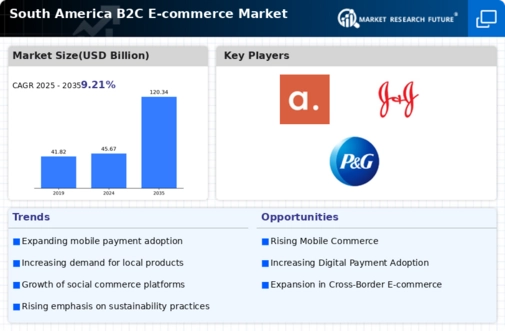The South America B2C E-commerce Market represents a dynamic and rapidly evolving landscape characterized by a diverse range of players and consumer behaviors. With a combination of increasing internet penetration, mobile device usage, and a growing middle class, the region has seen significant growth in online shopping.
This competitive market is fueled by technological advancements, changing consumer preferences, and a shift towards digital solutions, allowing various companies to capture significant market share.
The landscape is marked by a blend of local and international players, each vying for consumer attention through unique value propositions, strategic marketing, and optimized supply chain operations. The competition is further intensified by the presence of innovative payment solutions and logistics services which cater to the diverse needs of the regional population.
Magazine Luiza has established itself as a leading force in the South America B2C E-commerce Market, primarily through its robust omnichannel strategy and strong brand presence. The company's ability to integrate online and offline experiences has positioned it favorably among consumers seeking convenience and personalized service.
A key strength lies in its extensive network of physical stores throughout Brazil, which not only complements its online marketplace but also enhances customer trust and engagement. Magazine Luiza’s strong logistics and delivery infrastructure allows for efficient operations, making it a go-to choice for many Brazilian shoppers.
Additionally, the continuous investment in technology to improve user experience reflects the company's commitment to staying ahead in the competitive landscape, solidifying its market leadership.
OLX Brasil has carved out a unique niche within the South America B2C E-commerce Market by focusing on peer-to-peer transactions, enabling users to buy and sell goods and services directly. As a prominent online classifieds platform, OLX Brasil has garnered significant market presence due to its user-friendly interface and broad range of categories, which includes everything from electronics to real estate.
The company's strengths are underscored by its vast user base and strong brand recognition in Brazil, which enhances trust and credibility. OLX Brasil has explored various avenues for growth, including partnerships and enhancements to its platform to improve customer experience and service offerings.
The focus on mobile optimization and the introduction of new features cater to the evolving demands of consumers, further solidifying its position in the competitive landscape of South America's B2C E-commerce Market.













